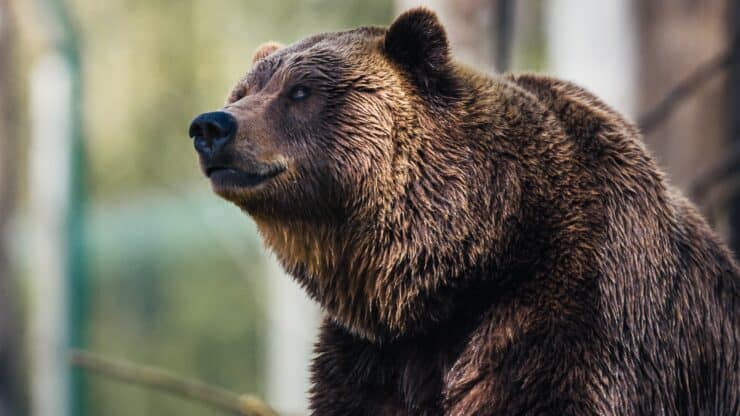
Easy Bear Safety For Hikers and Campers
It's a special moment when you get to witness a bear in the wild, but at the same time, it can also send your heart up through your throat. And that's normal; bears are big, top-of-the-food-chain predators. But they're not killing machines on a rampage looking for humans to eat. Most of the time, bears will run away from you, and it's easy to hike and camp in bear country safely. Don't let bears stop you from enjoying the outdoors.
- Understanding How Bears Are a Threat
- Preventing a Bear Attack
- What To Do When You Encounter a Bear
- Camping With Bears
My approach to bears is based on a few sources:
- my experience encountering them out on the trails from Alaska to the Smokies
- conversations with rangers in bear country like Yosemite and Lassen National Parks
- and my friendship with a bear biologist who spends lots of time with bears and knows what makes them tick
The recommendations in this guide are based on what I've seen work. But bear safety can be a bit like politics, and some folks have strong feelings about different approaches. Read the guide, try out the methods I show you, and adapt based on your own experience.
And I'm often asked whether it's safe to hike with bears, so let's clear that up. The answer is yes. There are just a small handful of bear attack deaths in the lower-48 over the last 20 years. Statistically you are 130 times more likely to be hit by lightning, and 6 times more likely to win Powerball. Be prepared for bears, but don't let them stop you from enjoying the backcountry.
Know the Bear
Before we talk about avoiding bears, it helps to understand how bears operate.
For North America, there are two types of bears, black bears and grizzly bears. Grizzly bears are also known as brown bears. To make it confusing, both grizzlies and black bears can range in color from light brown to black.
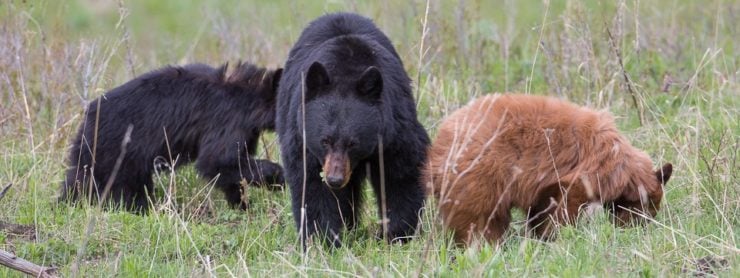
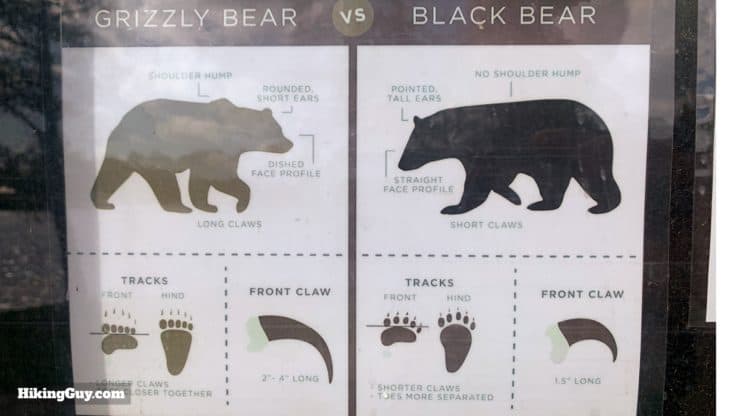
99% of the time you don't have to worry about identifying which type of bear you see. Why? Because in the lower-48 United States, you'll only find grizzlies in Montana, Wyoming, Idaho, and northern Washington State. So that means NO grizzlies in California, Colorado, etc. At one point, grizzlies roamed most of the western USA, but today, that's not the case. So unless you are in grizzly country, assume any bear you will see is a black bear, even if the color is light brown.
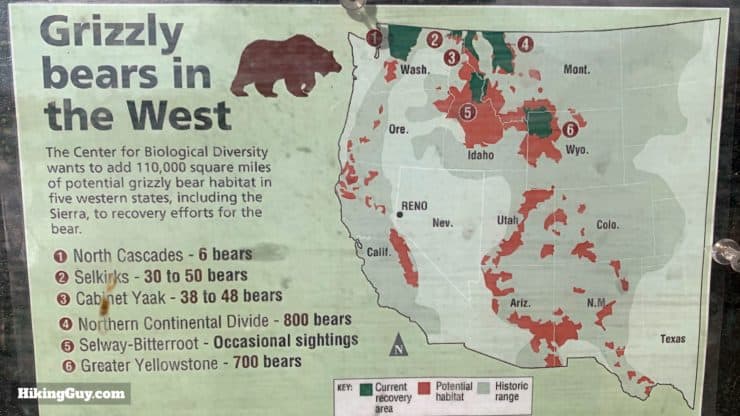
If you are in a place where you can have either type of bear, you have to identify them. I've found that while there can be a confusing overlap, generally if you follow the chart in the previous image, it's spot on. The grizzlies that I've seen are bigger, browner, and have smaller ears. The other big thing that I've noticed is that most wild black bears will sprint away from you as soon as they see you, whereas grizzlies will take note of you and then continue to do their thing. The exception are black bears that are used to a human presence, like the black bears in Yosemite National Park.
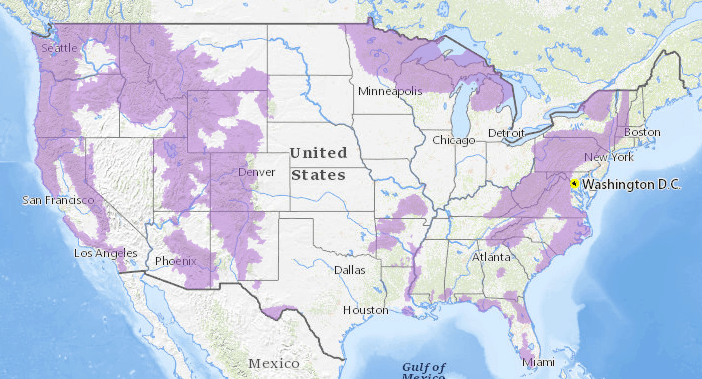
Understanding Bear Behavior
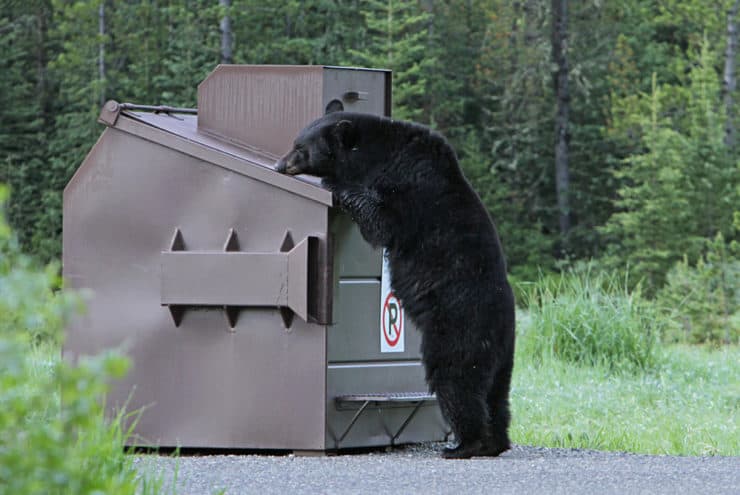
No matter how habituated to humans that bears become, they are always wild animals. Bears generally act predictably, but like humans, they can have their own personality and stray from the norms. Either way, if you stay aware on the trail and give bears lots of space, you will be fine.
- Bears are shy animals that generally avoid humans.
- Most of the time bears are looking for food. Sometimes their focus on getting food is so intense that they tune out the rest of the world, and it's easy to startle them. Bears are omnivores and often eat plants, berries, insects, and sometimes fish or small mammals.
- Bears can be curious, especially about new or odd objects in their environment. Curiosity is not aggression.
- Bears are generally active during the day and sleep at night, but like people, it can vary.
- Bears like to travel along paths of least resistance. Look for them on trails, ridges, along the water, and on larger animal runs.
- Bears have a great sense of smell and can often smell you before you even see them.
- Bears have a roughly 100 foot bubble of "personal space" where, if you enter it, can get aggressive. Normally you wouldn't walk right up to a bear, but you can easily come around a corner and startle a bear.
- When bears have young, they can get aggressive in protecting them. Young bears can easily wander away from the parent. If you see a mama bear with a cub or two, don't assume that there aren't more, maybe near you.
- When black bears see a human, they will generally run away, and can even climb a tree to hide (they're very good tree climbers).
- Grizzly bears will generally take note of humans and continue to do whatever they were doing. Grizzly bears are not great climbers and will aggressively defend themselves if they feel threatened.
Bears Conditioned To Humans
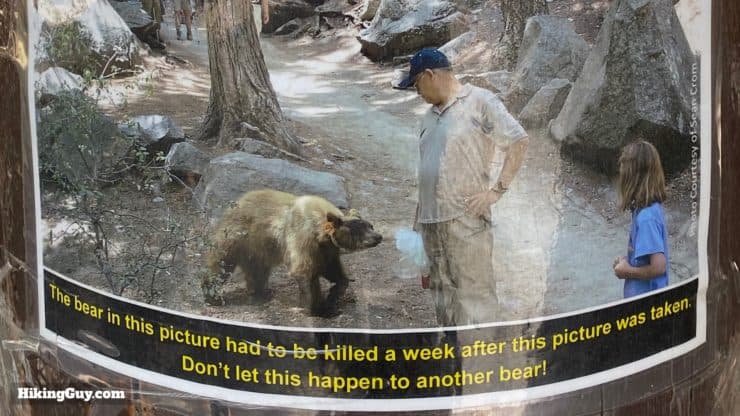
In places where humans come into contact with the wild and bears, they can be emboldened to approach humans looking for food. In these cases bears won't respond normally and can focus more on getting to food than avoiding humans. In these instances it's best to just give bears a wide berth and avoid them. If you see a ranger, let them know.
Hiking With Bears
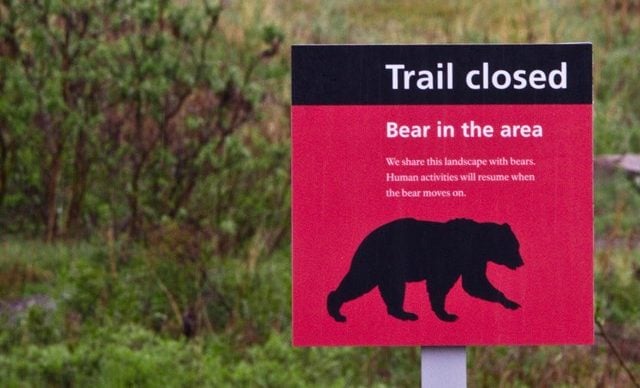
The first thing you're going to want to do is know if bears are active where you're hiking. Even if bears are theoretically in an area where you are hiking, in many places they are rarely seen and thin on the ground. I generally group my bear-awareness into three buckets.
- "Don't worry about" is when I'm hiking in theoretical range of a bear but there hasn't been a sighting or any warning signs. In this case I don't even think about bears when I hike.
- "Might be a bear" territory is where I've seen signs such as bear crossing signs on the road, bear warnings at the trail board, trailhead bear boxes, or reports that bears are active. When I'm hiking in this environment I'll keep my eyes open for signs of bears, but otherwise hike as normal.
- In "active bear" country I'll be vigilant about bears. Generally you'll know if it's an "active" zone if you see ad-hoc warnings at the trailhead, see fresh scat on the trail, or if the area has recently been closed for bear activity. When I'm hiking here I'll actively make noise and have bear spray on my pack, ready to deploy. More on that later.
Assessing the Situation on the Trail
If you're in a "might be a bear" situation, you should keep your eyes open for bear activity when you hike. The most common signs of bear activity that you'll see on the trail are scat and marked trees. If you see these signs, assume that you're in "active bear" country.
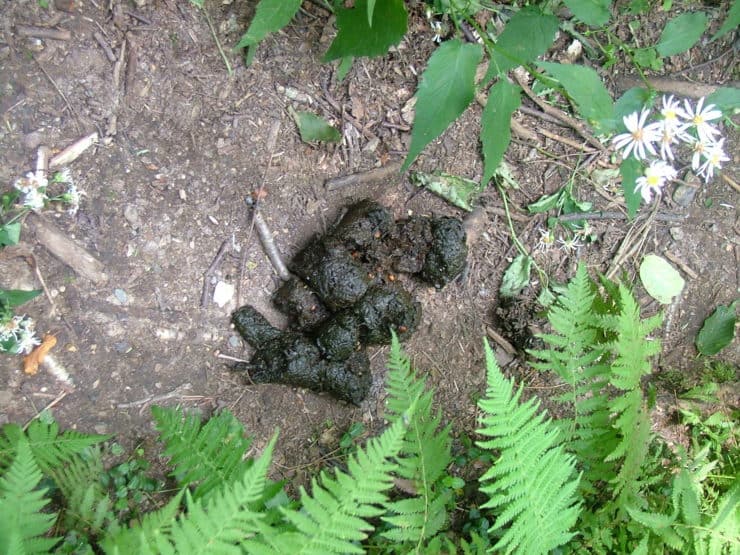
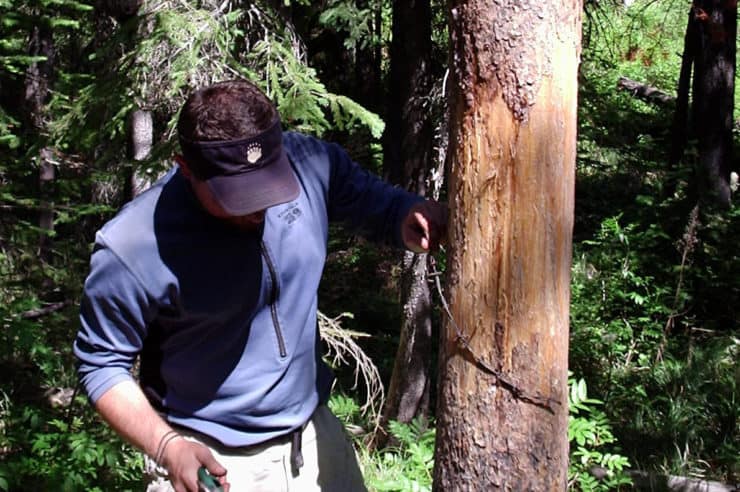
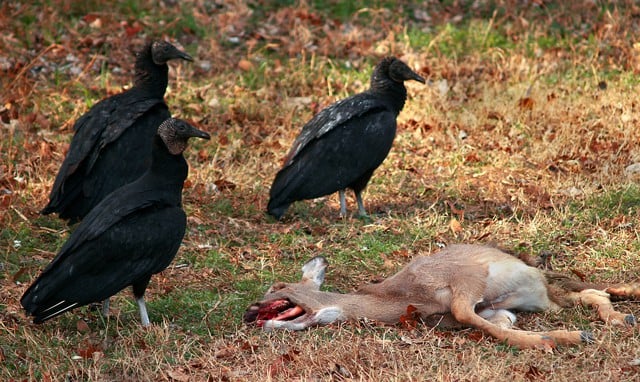
If you are hiking and you smell something like a stinky, wet dog, that's probably a bear, and it probably means that you crossed paths rather recently.
Countermeasures on the Trail
Okay, so you know that there are bears around. You can still hike safely and have a good time out on the trail, but you're going to want to do everything you can to make yourself known to any bears in the area so that they are not startled by you and can avoid you. Most bears will see you without you seeing them and will avoid you automatically. It's really about just being extra aware.
- Make noise. Some folks put a little "bear bell" jingle bell on their pack, but they're not really loud enough to warn a bear at a distance. You can whistle, talk to yourself, sing out loud, whatever.
- Hike in a group. If you are with others and are hiking spread out, adjust your pace to hike together.
- This may be obvious, but don't smell good. Don't hike in bear country after you've cooked bacon or washed with that fancy strawberry scented soap. You get the idea.
- Make sure your dog is on a leash and close to you.
- Hike cautiously around blind turns, corners, and near loud streams. You're going to want to make sure you can see ahead of you as much as possible, and when you can't, notch up the noise making.
- If you're hiking into the wind, it means a bear ahead of you can't smell you, so notch up the noise a little bit more.
- Carry bear spray at the ready (more later).
It's easy to think everything is a bear when you know that you're in an active bear country, especially after seeing one. After seeing a bear, a common dynamic for me is to jump every time a squirrel rustles through the leaves or a bird flicks a leaf up on a tree. It's normal. Bears are big and scary, even if you know it's not actively trying to kill you.
Encountering a Bear
When you do actually see a bear, especially if it's a new and scary / exciting experience, it's not the time to start running through checklists in your head about what to do. So I like to keep it simple. You're not going to outrun or out-anything the bear.
- Give the bear as much space as possible. Once you're within 100 feet, you'll probably be considered a threat.
- Let the bear know that you are there by calming talking to it "hello bear I am here."
- Let the bear move off. Most of the time the bear will run away, but if not, continue down the trail when you can clear the bear by at least a few hundred feet. Go off trail if you have to. Otherwise just wait for the bear to move. If you feel like you're too close, walk backward away from it.
- Take the safety off your bear spray and get ready to deploy it.
Most of the time, when I see a black bear, it goes something like this:
And when I've seen a grizzly, it pretty much ignores me and does its thing. I've never been this close to a grizzly and I don't recommend it if possible, but this video illustrates the "whatever" attitude a grizzly will have to humans if it doesn't think you're a threat.
Bear Spray Is a Must
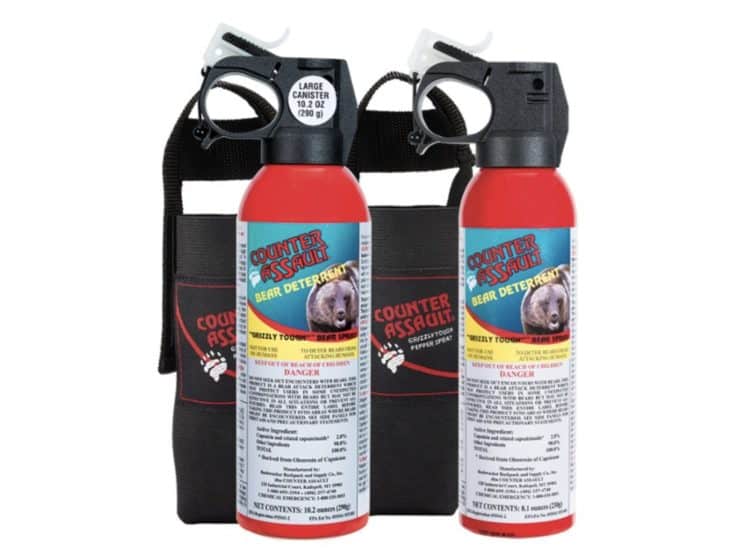
If you are hiking in bear country, you should have bear spray. It's the common recommendation that all the experts that I've talked to advocate. Bear spray is basically mace or pepper spray for bears. It's in a long aerosol can. You take the safety off, pull the trigger, and pepper spray comes out at 70mph. It works on bears, mountain lions, and people (which are, statistically speaking, always your biggest threat).
So invest in a can and keep it with you when you're on the trail. If I'm in "might be some bears" or "active bear" territory, I'll keep it clipped somewhere handy on my belt. You don't want to have it buried. If you do need it, you'll need it quickly.
- When the bear is 20-30 feet away, shoot it below the face for 1-2 seconds.
- You have about 7-9 seconds of total spray.
- Try not to be downwind of the bear, you don't want the spray coming back in your face.
Here's a good video showing how to use the spray.
Once you spray at a bear, you then take countermeasures like you would normally. Give it space, back away from it, avoid it.
What About Firearms?
People have used guns to stop a bear attack, but the Parks Service highly recommends that you use bear spray instead a gun. Generally discharging firearms in parks is a no-no, as is killing a bear. And a US Fish & Wildlife study found that bear spray was significantly more effective at preventing injury in a bear attack. Firearms are a topic that folks get worked up about, and I'm sure I'm not going to change anyone's mind who wants to take their gun out there. But if you were considering it and are on the fence, statistically you're better off with spray.
And using a firearm can also have unintended consequences. There's a story that's been making the rounds about a bear shot by a hiker. The bear later died, leaving three cubs behind. The cubs would have died in the wild, so they had to be captured and brought to an accredited wildlife facility or euthanized. Fortunately a facility in Arizona was able to take them in. Point is, bear spray is a better option.
If The Bear Spray Doesn't Work
I'll start by saying that this scenario is rare, but it doesn't mean that you shouldn't prepare for it. And again, let's keep it simple.
- If a black bear attacks you, fight back. Use your trekking poles, hit it in the face with a rock, whatever you can manage. The idea is to get it to know that it's going to be hard work dealing with you. You want it to give up and shove off.
- For a grizzly, get face down, legs spread (to prevent being flipped), and hands on the back of your neck to protect your spine. Lie prone and don't fight back. You want the grizzly to realize that you're not a threat and move on.
If a bear has acted aggressively towards you, it's important to notify the rangers as soon as your hike is done. If you just see a bear and it runs away or ignores you, you can still call the ranger and let them know, they generally like to keep tabs on bears.
Camping With Bears
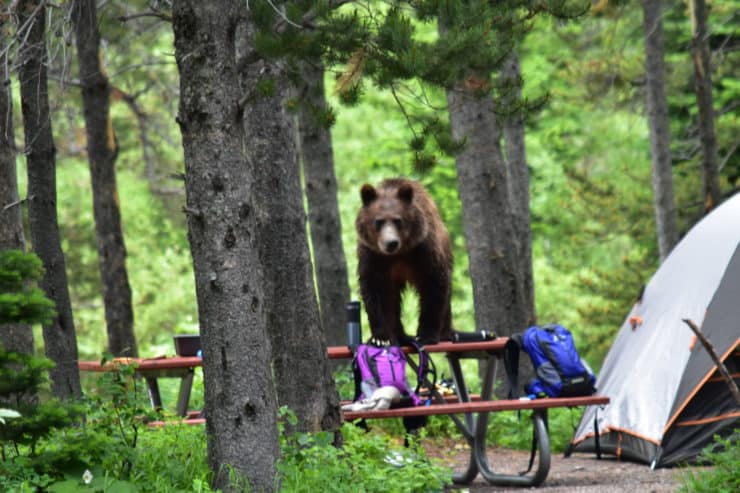
People have strong opinions about food storage when camping. This is what works for me.
The good news is that when you camp, you're not going to startle a bear. The main concept when camping is to remove all the scent from your camping area so that there is nothing interesting for a bear there. It's not about outsmarting the bear by keeping your food in some ingenious situation that the bear can't solve. If you have something stinky or smelly, a bear will figure out how to get to it. Just assume that.
And the goal is not only to protect and preserve your food, but also to keep bears wild by keeping them away from human food. Unfortunately a bear that gets used to human food often gets labeled as "aggressive" and is killed. Protecting food from bears today is easy and simple. Do the responsible thing and invest in a good food storage system.
Using these measures also helps thwart rodents and smaller creatures, which are often a bigger threat to your food than bears.
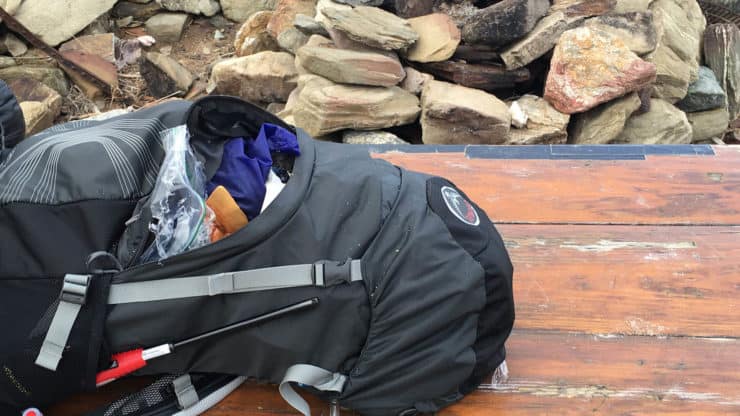
Hide Odors

So the first thing I do is keep my food in an odor-proof bag. There are a few options that most people use, the OPSACK ( REI and Amazon), Smelly Proof Bags, and BOS Bags. They're all variations on a plastic bag that holds in odors. And while they may be labeled as odor-proof, I doubt they hold odors in 100%. I look at them as something that greatly reduces the odors. They all cost more than regular plastic bags and don't last forever (hence some of the low-star reviews that you'll see). I've used them all and honestly they all work. Just get whatever is cheapest / easiest / or best suits your needs.
Plan on storing anything that has an odor, such as toothpaste, sunscreen or soap, along with your food.
Protect the Food
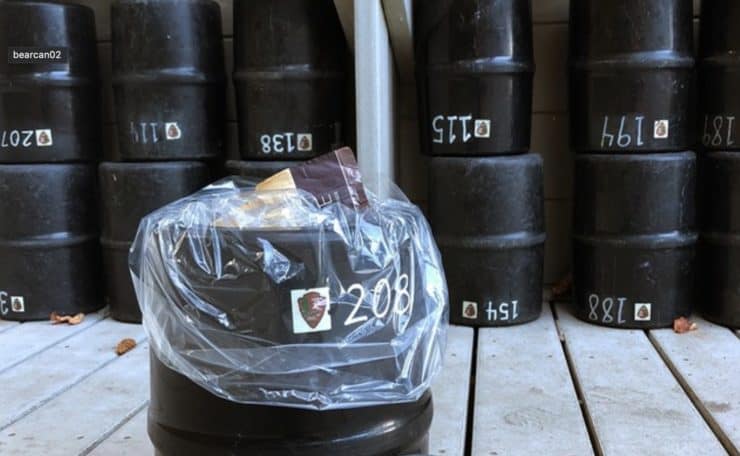
Similar to my three earlier levels of bear-awareness, I have three levels of bear camping protection that I'll use.
- "Don't worry about bears." I'm in an area where there are not active bears, or I'm doing dispersed camping away from campsites where bears would check for food. Generally if you're hiking and you don't see any bear warning signs and there is no mention of bears when looking at the park website, you shouldn't have to sweat it. In this case, I keep my food in a smell-proof bag in my sleeping bag with me. Some people have had rodents chew through their tent to get at food, and instead hang this bag inside the vestibule or from a tree. I've found that with a good odor-proof bag, I don't get rodents. If I'm in a spot with a lot of rodents, I'll use my Ursack (see next).
- "Could be some bears." This is probably the most common scenario for most people. You've seen bear warning signs in the park or on the website, but there are no requirements for special bear-proof gear. In this case I store my food in a smell-proof bag within a Ursack Allmitey (REI and Amazon). The Ursack is a soft bag that uses high-tech fibers to keep rodents and teeth out. You put your food inside, close it, and then tie it to a tree with the attached 6 foot cord. When I sleep, I'll keep some stones next to me to throw at a bear that I may hear enter the camp area at night.
- "I'm in active bear territory." In this case, I bite the bullet and use a bear canister. A bear canister is a bulky container that you put your food in and close. I still use a smell-proof liner inside the canister. It's a pain to carry the canister, but I know that I don't have to worry about bears, so it's okay. There are a few good options, but the BV450 or BV500 ( REI ) has worked well for me all the time. In addition to stones, I'll keep my bear spray at the ready.
Note that bears have broken into every type of protection, which is why everything is labeled "bear-resistant" and not "bear-proof." I've been very successful with the Ursack and it's a great balance of protection versus weight. If a bear is determined and spends a lot of time on it, your food may be crushed, but the bear won't get the human food, which is the most important thing. I've used Ursacks in bear country, including the Sierras and Rockies, and I never had them crushed or chewed on.
Here's the bear versus Ursack video so you can see what it's all about.
How Much Food Fits in a Bear Canister?
Park Requirements
When you're researching your route and trip beforehand, you'll see that some parks have specific requirements for bear canisters. Make sure you heed the advice and get a canister. It's specific advice because the park knows that bears are a problem. Generally when bear canisters are required, it's easy to rent them at the park or nearby outdoors outfitters if you don't want to invest in one. In parks where canisters are mandatory, incidents with bears have decreased dramatically.
Campsite Structures
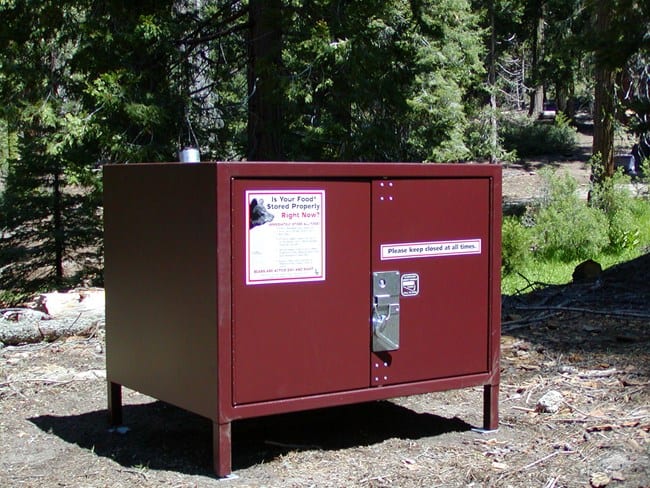
And sometimes parks build food storage into the campground. These could be metal bear-proof boxes, or metal cables to hang your food on. If you see these, use them. If you do have one of these options at the campground, I still take the same precautions such as the smell-proof bags and protective container. I just use them all together.
What About a Bear Hang?
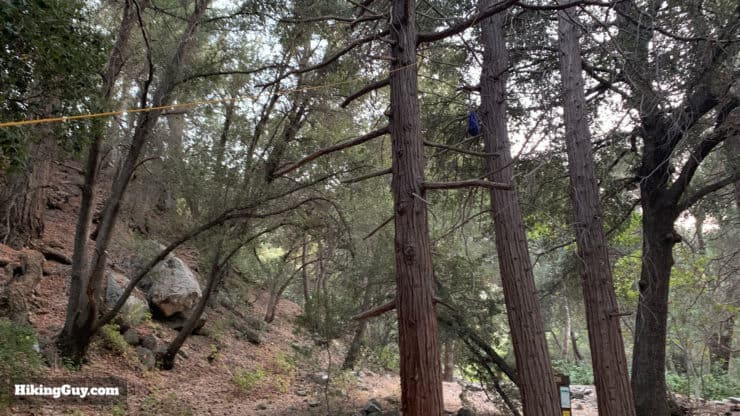
I've used bear hangs successfully for years, but today using an Ursack or hard-sided canister is a more effective method. Why? There are a few reasons.
- Finding the right tree and branch for a bear hang can be challenging and time-consuming.
- Bear hangs are usually obvious and easy for a bear to spot. They can also spread scents over a wider area if not odor-proofed.
- Most black bears are good climbers and can get at a bear hang. Or if they can't climb to it, they can probably find a way to break branches, etc. and pull it down.
If you're not familiar with how adept bears can be at getting to hangs and food, take a look at this video.
So I think that an Ursack or canister is a better way to keep food inaccessible and keep the bears wild. But if you do use a bear hang, you should still odor-proof your food. And while there are a few methods of creating a bear hang out there, I've found that the PCT method or just throwing a stuff-sack of food attached to thin cord over a high branch (underhand swinging works well) is fine. You don't have to get too tricky.
Campsite Logistics
First off, know that established campsites are often on the rounds of animals, including bears. They know that humans camp, there's food, and it's often worth a look around. So the ideal campsite (in a lot of ways) is somewhere dispersed, away from established campsites and human activity. In some places, this is not an option, but a good amount of public land in the USA allows for dispersed camping. So pick a place not on the bear's normal food search if you can.
Once you have a campsite and storage method, it's time to figure out where you want to store it. The big thing is to try not to do any cooking in your tent. The only smell that you want coming from the tent is that of your stinky body. Try to prepare your food 200 feet away from your tent, and then store your food 200 feet away from your tent.
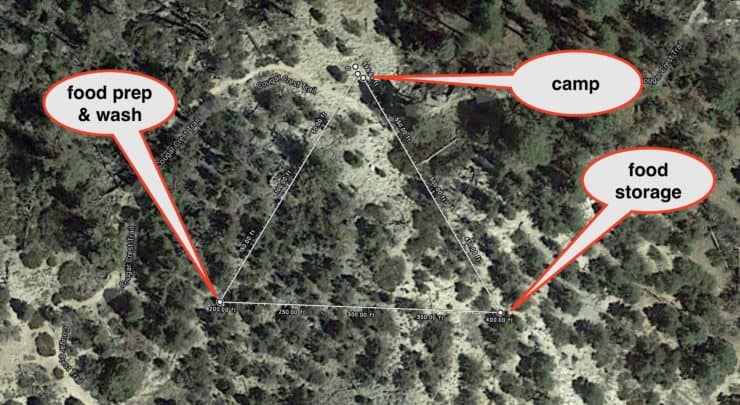
When you cook and prepare food, try to keep spillage at a minimum, and either eat any crumbs or scraps, or scrape them into your trash bags. If I'm camping by a stream or creek, I'll go downstream and clean everything in there.
Another good method to keep smells away from your campsite is to eat an hour or so before you stop to camp. Eat, clean up, hike some more, and then camp.
If you're using an Ursack, tie it to a tree according to their guidelines. When you don't have trees, some folks bury it under small boulders, hang it off of a boulder, or even submerge it in a lake. The Urasck is resistant but you still want to make it hard for animals to work at it, which usually results in the food getting crushed. If you are using a bear canister, then hide it in the bushes or rocks. Keep it away from cliffs or water sources; bears may knock it around if they find it. Don't attach anything to the canister; it's got smooth edges designed to prevent a bear carrying it away.
I'll also keep my backpack and gear inside the vestibule of my tent. Bears are curious and those accustomed to making their rounds at campsites can mess with your gear when looking for food. I got an email from a reader who left their orange GPS unit on a picnic table overnight by their tent. In the morning, they saw that a bear had bitten into the GPS and crushed it. So that can happen.
Curious Bears
If you're camping and a bear enters your camp, it's probably smelled food. You should grab your food, move away, and then follow the same instructions as when encountering a bear. If you grab the food and it keeps coming at you, drop the food as a last resort. If a bear eats your camping food, report it to a ranger as soon as you get back.
Parking in Bear Country
Parking is similar to camping, you want to protect your food and smelly items from a bear. The general rule is that if you see bear boxes in a parking area, use them. It helps to keep your food in a cooler and then just put the whole thing into the bear box. Bear boxes are generally shared with other parkers. Bears have broken into cars to get food.
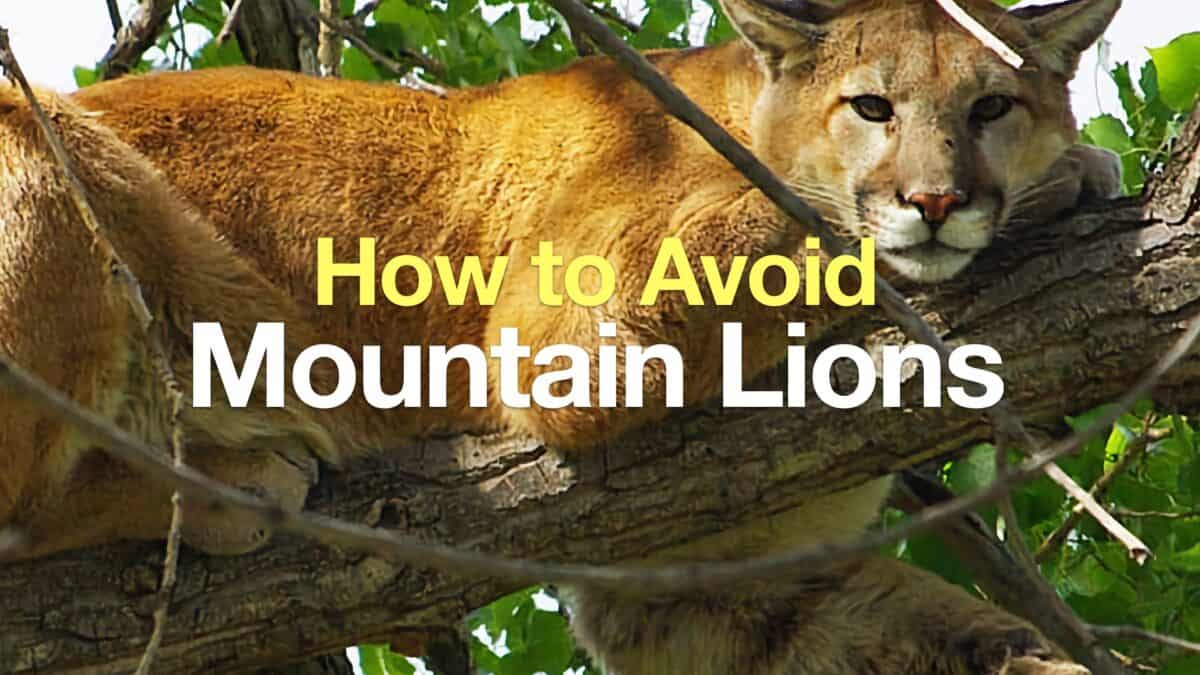 Understanding Mountain Lions When Hiking
Understanding Mountain Lions When Hiking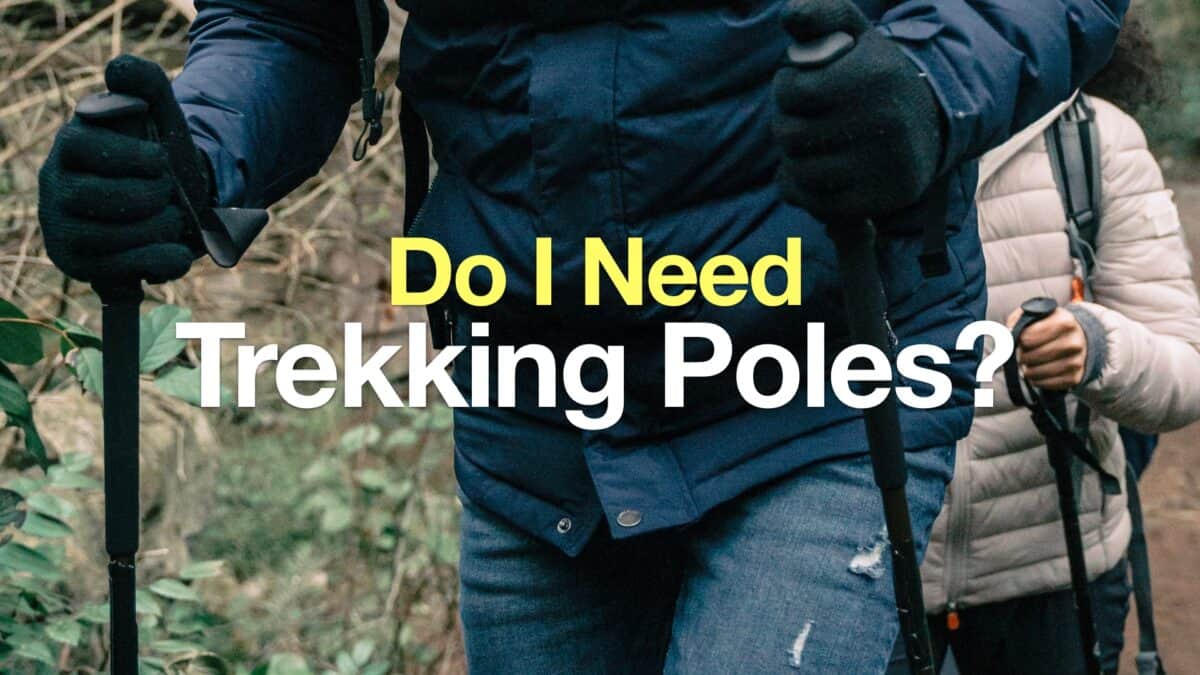 Do I Need Trekking Poles?
Do I Need Trekking Poles?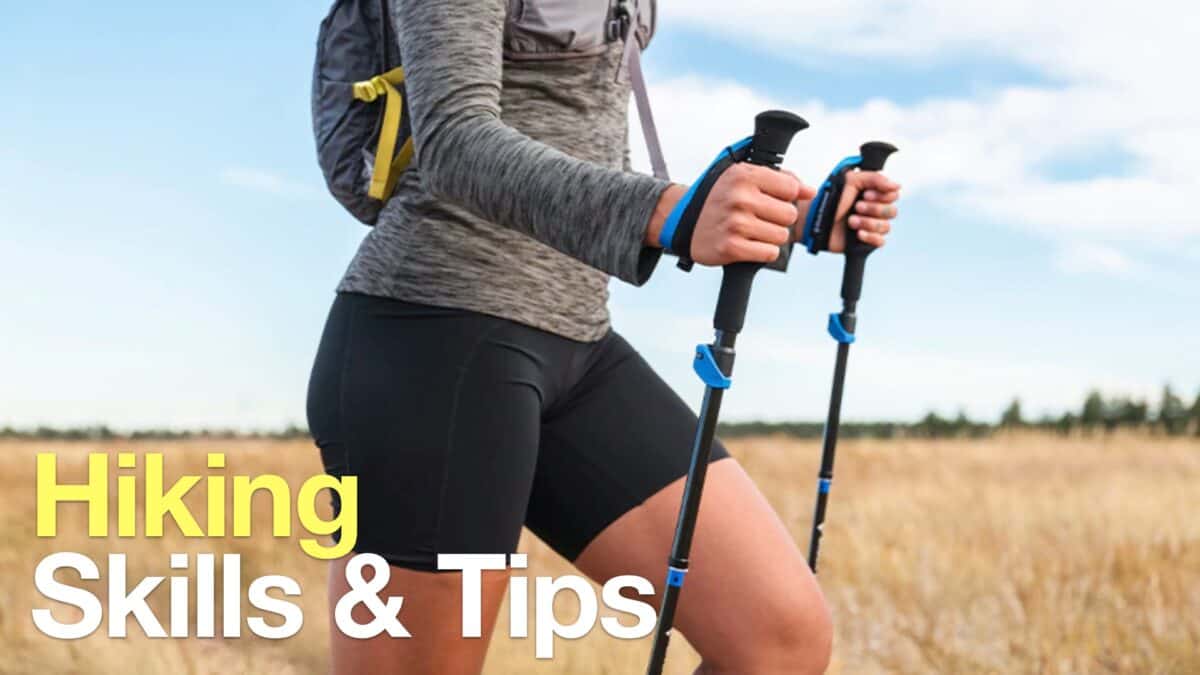 How to Hike
How to Hike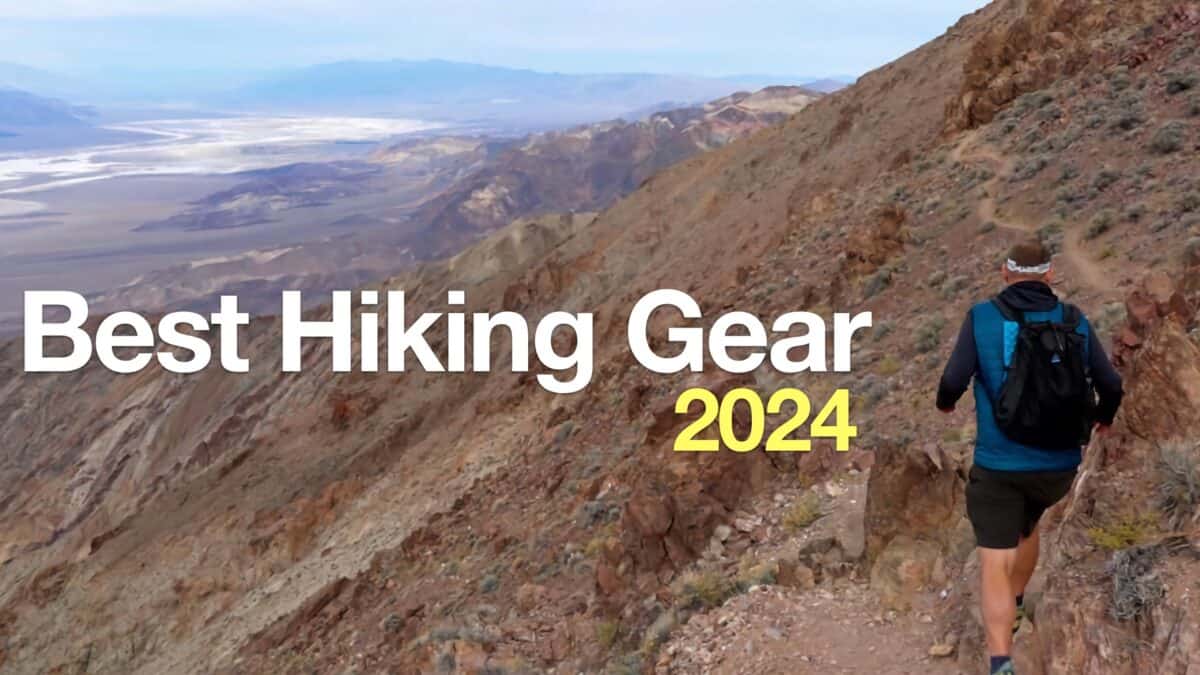 Best Hiking Gear 2024
Best Hiking Gear 2024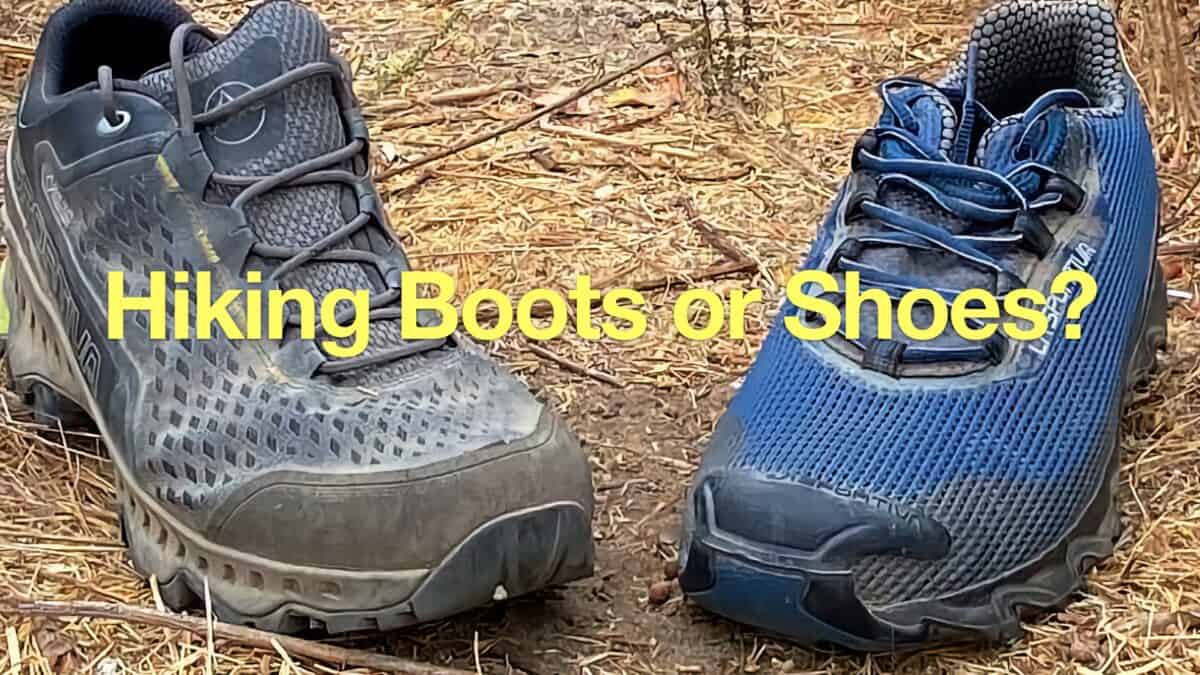 Hiking Boots or Shoes: Do I Really Need Hiking Boots?
Hiking Boots or Shoes: Do I Really Need Hiking Boots? When to Hit SOS on inReach
When to Hit SOS on inReach